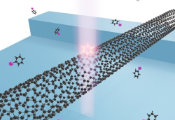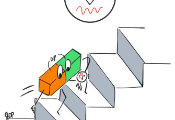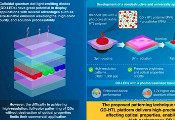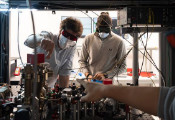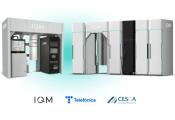A Tale of Two Higgs: CMS Searches for the Production of Higgs Boson Pairs
CERN, December 11, 2024 -- Since the CMS and ATLAS experiments announced the discovery of the Higgs boson in 2012, they have been measuring its mass and interaction with other particles with ever-increasing precision. Now, researchers are setting their sights on the Higgs boson’s interaction with itself, which could provide physicists with clues to the stability of the Universe. To do this, physicists search for a much rarer phenomenon than the production of one Higgs boson: the production of Higgs boson pairs, known as di-Higgs. In a new study, using data from high-energy proton–proton collisions in Run 2 of the Large Hadron Collider (LHC), the CMS experiment has released its latest search for di-Higgs production and provided constraints on their production rate.
Higgs boson pairs can be created in two main ways. The first is called gluon–gluon fusion, where gluons – particles inside the colliding protons – interact to produce the Higgs bosons. This process allows scientists to study the interaction between one so-called intermediate-state and two final-state Higgs bosons. The second method involves quarks, also inside the colliding protons, that radiate two vector bosons. These vector bosons then interact to form Higgs bosons, enabling the study of interactions between two Higgs bosons and two vector bosons.
Physicists at CMS performed their most recent analysis by searching for multiple ways that di-Higgs could decay. These final states resulted from Higgs boson pairs decaying to bottom quarks, W bosons, tau leptons and photons. By combining these searches and analysing all the data simultaneously using sophisticated analysis techniques – including boosted decision trees and deep neural networks – the collaboration was able to extract more information than ever before.
The study allowed physicists to establish upper limits on the rates of Higgs boson pair production with a 95% confidence level. The measured limits are currently at 3.5 times the Standard Model expectation for the total production of di-Higgs, and 79 times the Standard Model expectation for its production by fusing vector bosons.
With the Run 3 data-taking era of the LHC in progress, the CMS experiment has already doubled the amount of data collected, and CMS researchers are in the process of analysing it. One of the most interesting prospects for measuring the Higgs boson self-interaction is the upcoming High-Luminosity LHC (HL-LHC), scheduled to start operation in 2030. In this new phase, the accelerator will deliver to CMS the highest luminosity ever reached at a collider. Considering projections of luminosity and systematic uncertainties, scientists have estimated that they might start to see the first evidence for di-Higgs production with around half of the HL-LHC data. The collaboration looks forward to exploring this rare and exciting phenomenon further.

